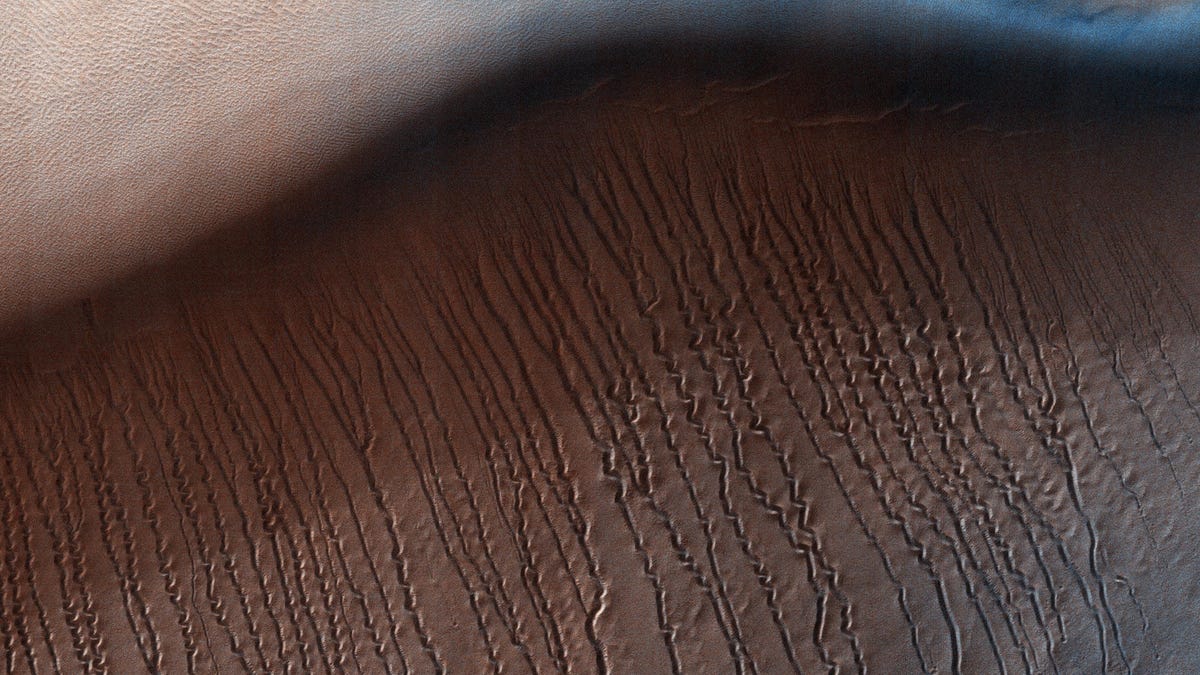Strange Mars 'scratch marks' have a scientific explanation
A weird Mars image shows a landscape full of squiggly lines, but NASA has a good idea how it came to be.
If you saw this image out of context, you might be a bit perplexed. Is it some strange macro shot of eyelashes? A weird desert landscape? It's actually a look at the Hellas Planitia on Mars, and it shows off some distinctive, surreal-looking lines.
Hellas Planitia is a plains area inside a massive crater that's deeper than the Grand Canyon and dates back billions of years. The surreal-looking photo released by NASA on Wednesday comes from the Mars Reconnaissance Orbiter and shows just a small section of the dramatic impact basin.
NASA describes the squiggly lines as looking like "scratch marks," but there's a scientific explanation for the odd formations.
The scratch marks are worn into a dune, but they weren't created by some giant clawed alien hand. NASA says the linear gullies are most likely caused by dry ice breaking up into blocky shapes and sliding down the sandy dune slopes, carving a path as they move.
NASA researchers previously spotted the process in action elsewhere on Mars, though the linear gullies in Hellas Planitia are exceptionally squiggly.
NASA's MRO spacecraft first launched in 2005 and has been orbiting Mars for over a decade. It continues to send back intriguing images as it surveys the surface and looks for clues to the history of water on the Red Planet.


